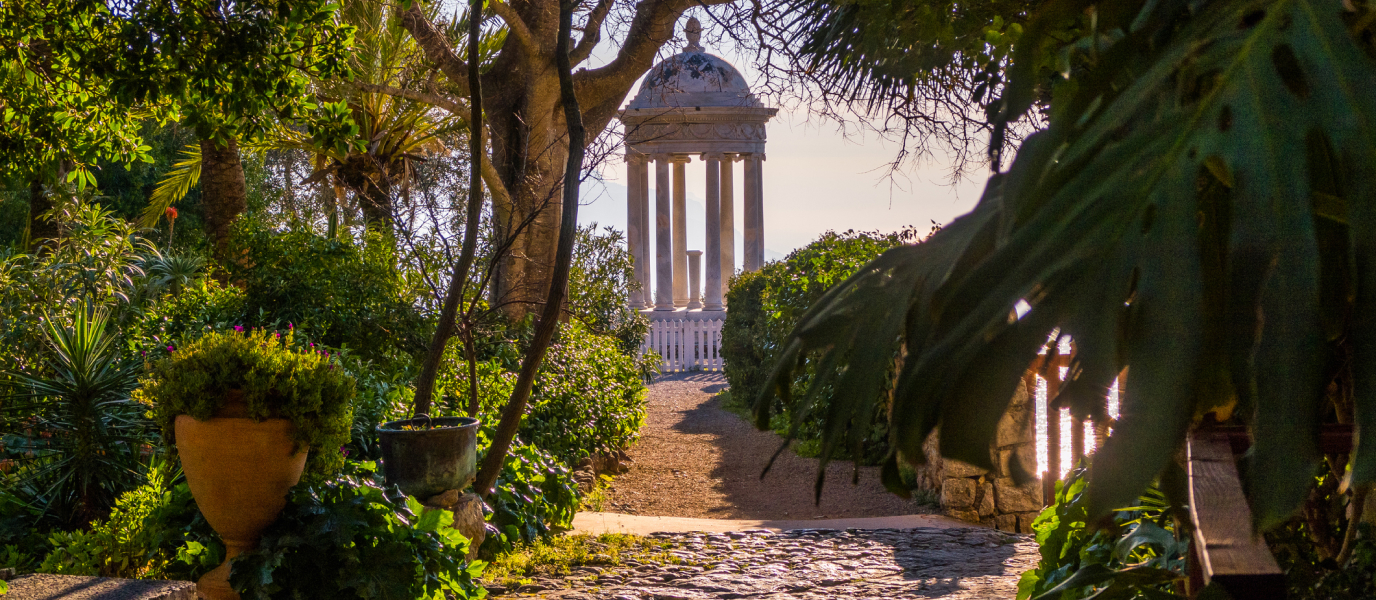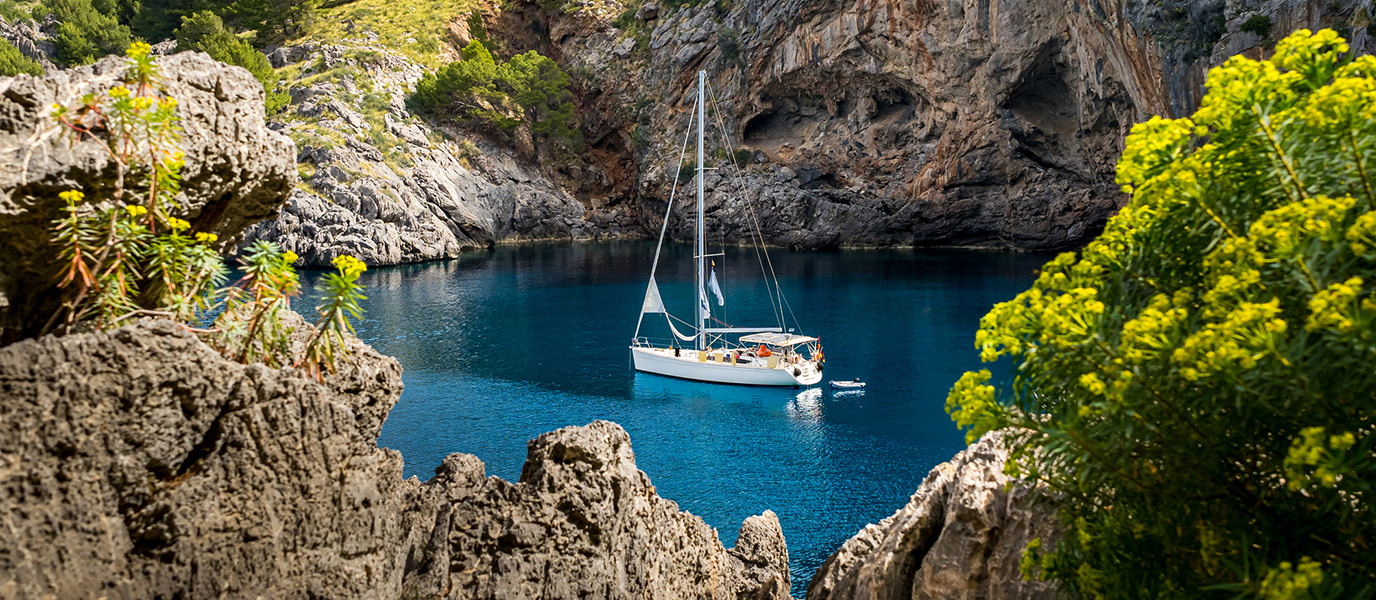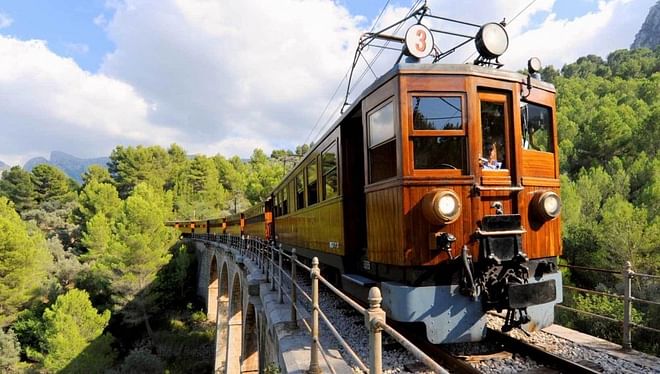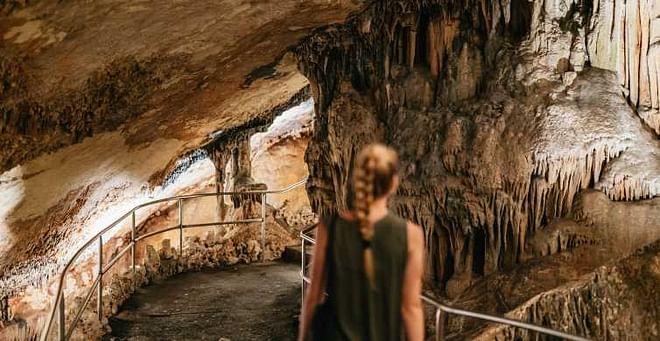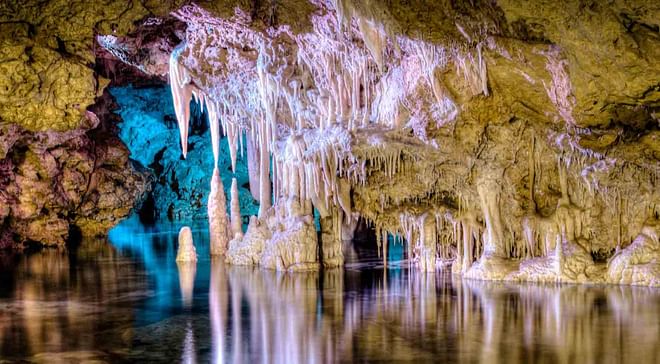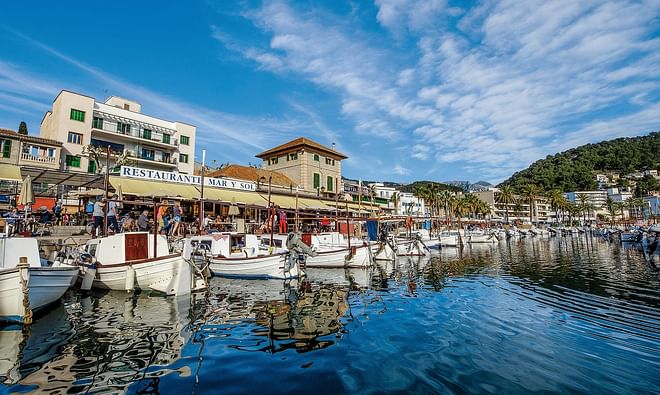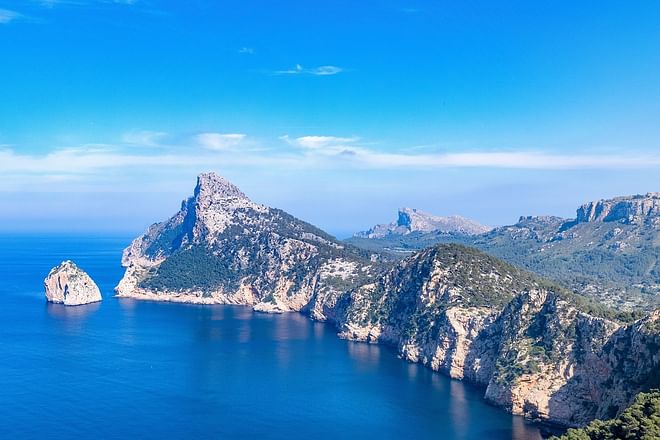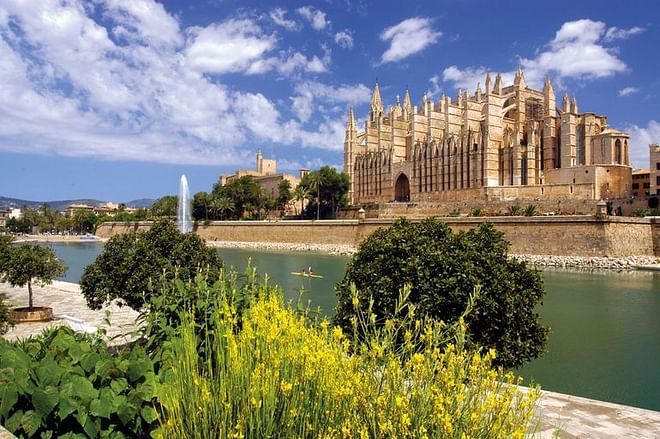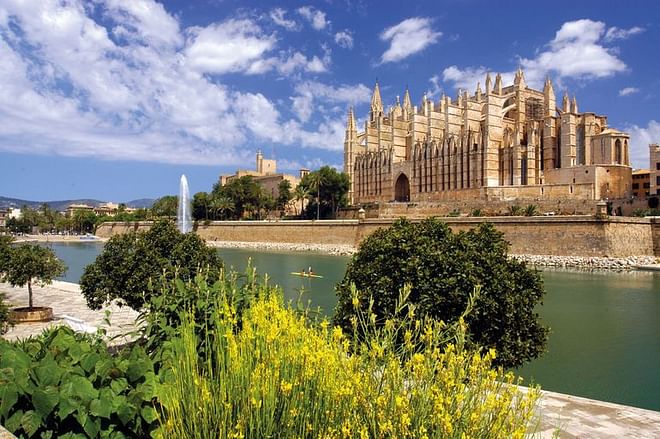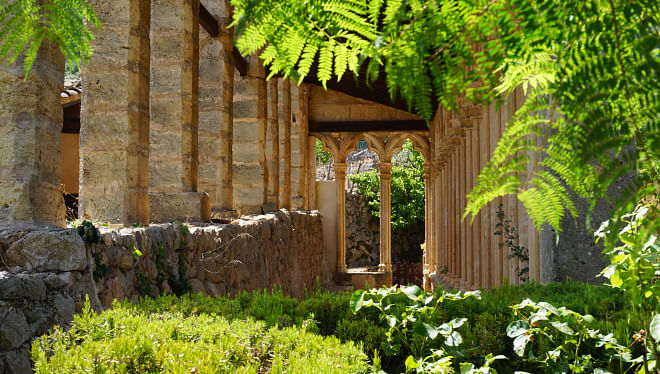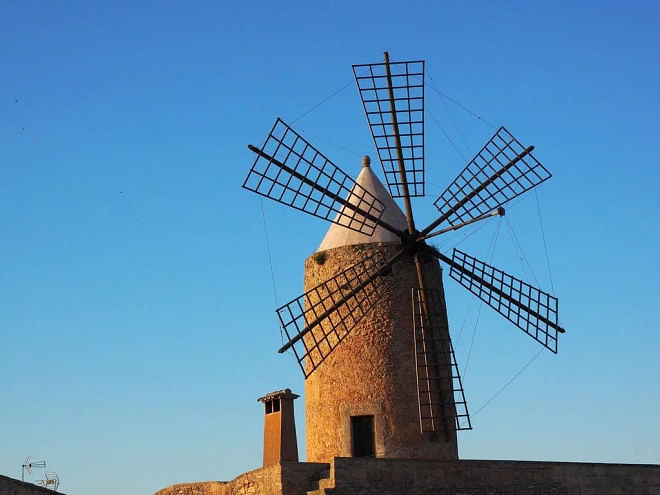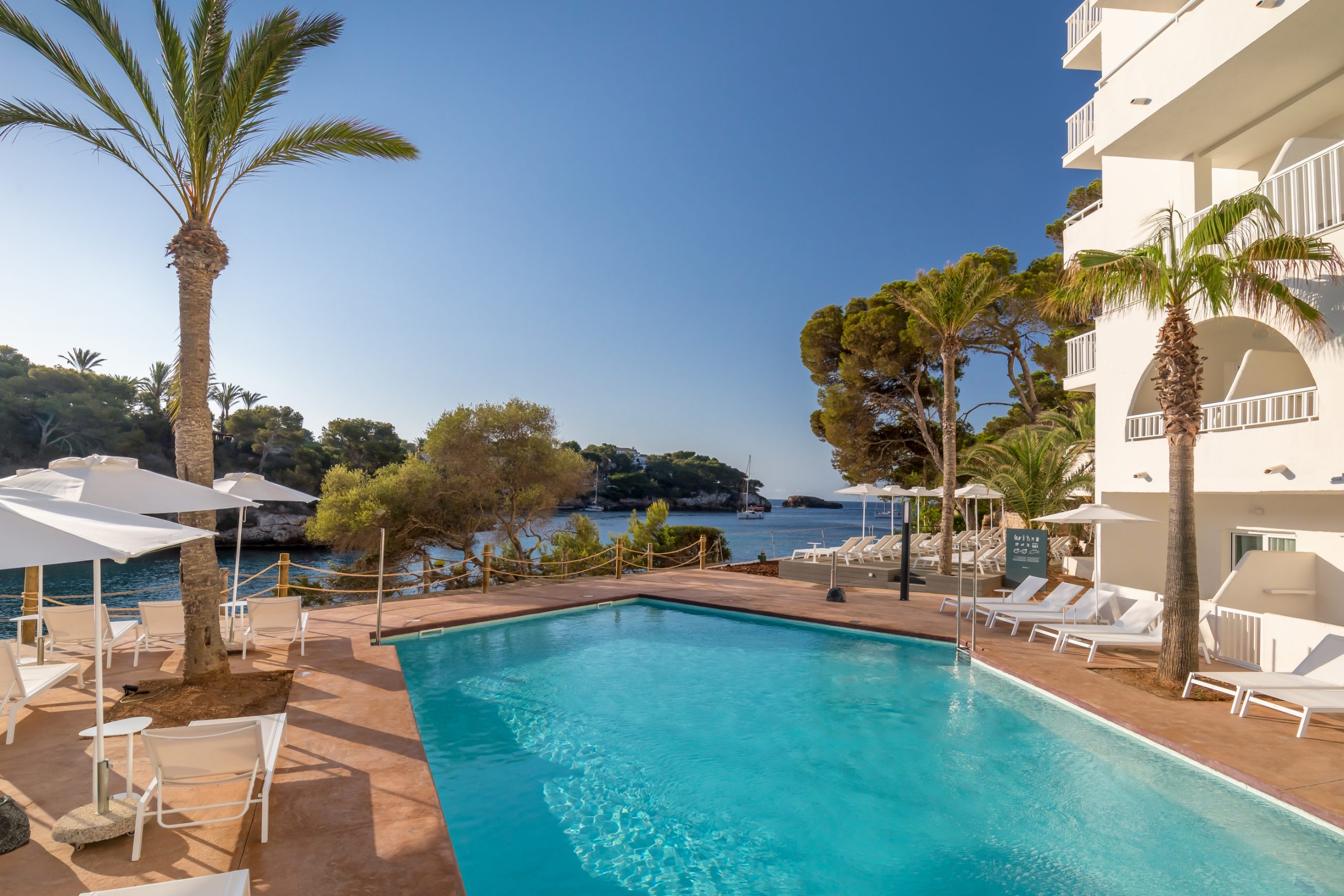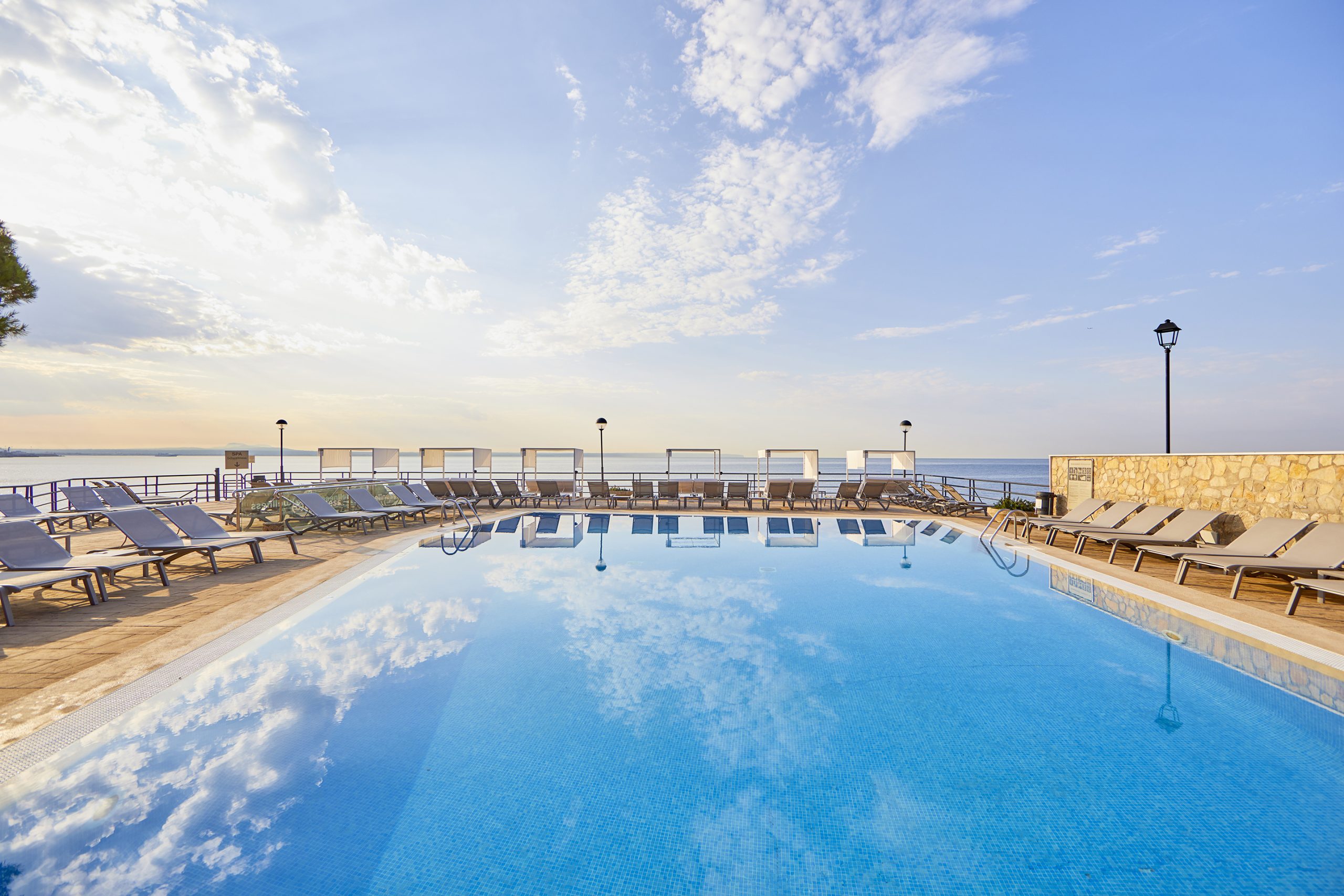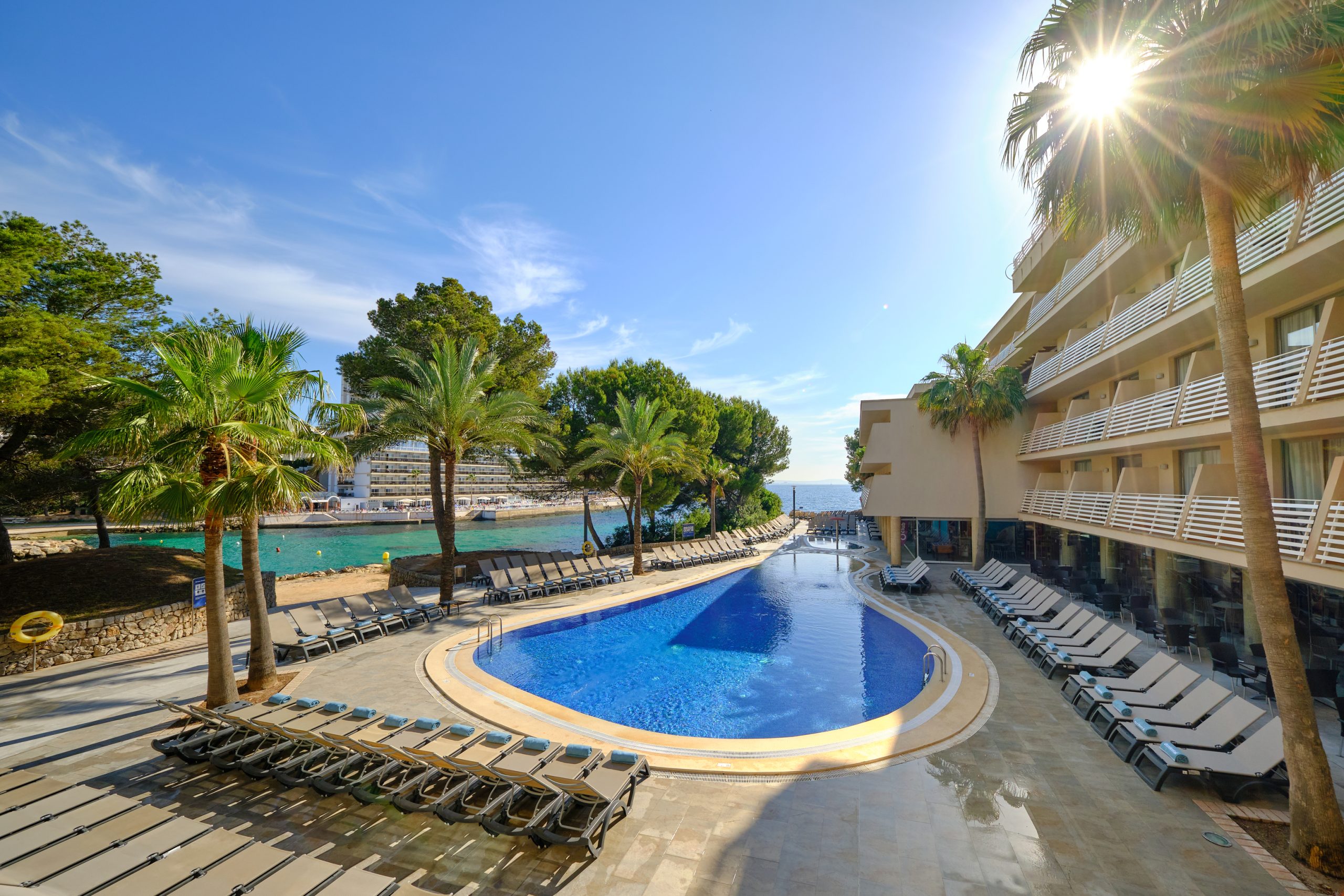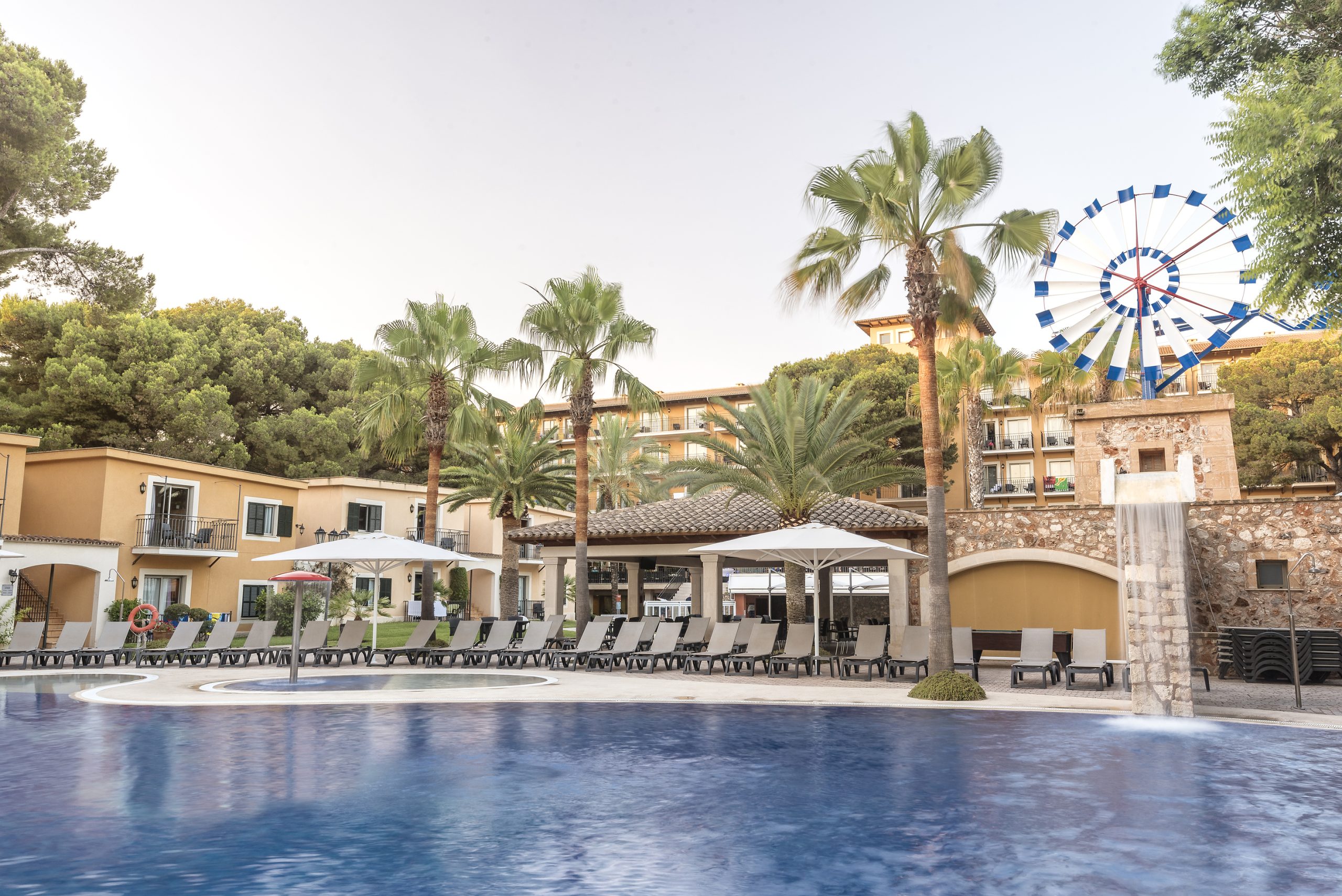Marivent is the most popular palace during the summer in Spain. Why? It is where the members of the Spanish Royal Family spend their summer holidays and where photo reports are made every season which are seen all over the world. However, Marivent Palace is much more than the entrance area and the stairs and columns immortalised every year by the press photographers with the image of the Spanish monarchs. For once, we will focus on this monument located in Palma de Mallorca, specifically next to the Cala Major cliff.
Marivent means ‘sea and wind’ in Majorcan, so its name honours the most abundant elements found in the area. They say that it is the favourite palace of Emeritus Queen Sofia, probably because this is where most of her children and grandchildren get together during the summer.
Marivent Palace, with address at 235 Avenida de Joan Miró in Palma de Mallorca, does not belong to the Spanish National Heritage, the institution which manages the Crown’s assets, but to the regional government of the Balearic Islands. This is because its former owner, the Egyptian artist and patron John Saridakis, donated the palace to the island with the proviso that his art collection would be exhibited to the Majorcans free of charge.
Brief history of Marivent Palace
We will now focus on its history. Marivent Palace was built in record time between 1923 and 1925 by the architect Guillem Forteza. It was personally commissioned by John Saridakis, who had amassed a large fortune as an engineer in Chilean mines and was in love with Majorca, up to the point that he lived there until his death in 1963.
After his death, his widow, Anunciación Marconi, donated the palace to the provincial government of the Balearic Islands with the proviso that it would be turned into a public museum named after her husband and always dedicated to his collection. This was said and done. The authorities fulfilled her wishes, but only until 1973. In that year, the provincial government decided to donate the spectacular estate overlooking Palma bay to the then Prince and Princess of Spain, Juan Carlos and Sofia, so that they could use it as their summer residence. Saridakis’ descendants logically opposed this measure and were perplexed with it, so they took the case to court.
In 1988, the Supreme Court ruled that the 1,300 works of art, the 2,000 volumes in the library and the hundred valuable pieces of furniture inside the Marivent Palace when the building was donated had to be returned to the legitimate heirs of John Saridakis. The contract and the last wishes of John Saridakis had been breached, so the paintings by Sorolla, Rusiñol, Joaquím Mir, Picasso and Delacroix that decorated its walls had to leave the palace after many years.
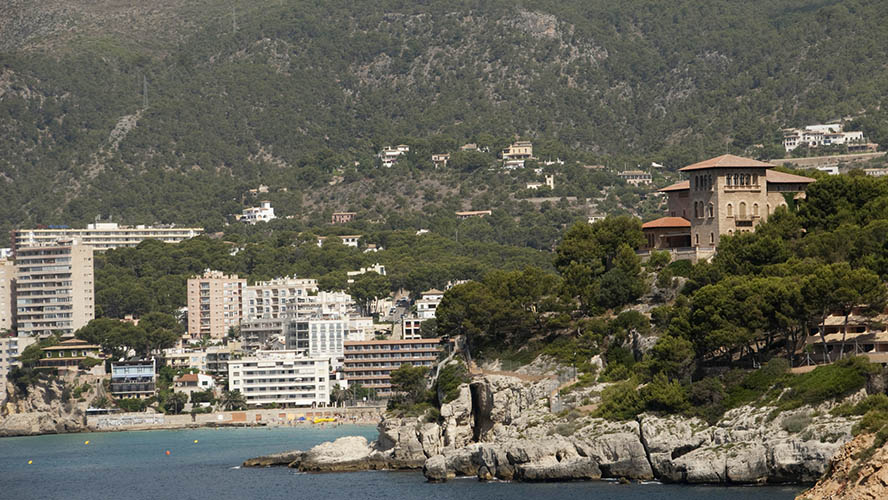
From Princess Diana of Wales to Gorbachev
Marivent Palace is located on a plot of 33,000 square metres, surrounded by lush gardens and pine groves. The main turret, which presides the building, has received illustrious visitors such as Prince Charles and Princess Diana of Wales, Emperor Akihito and Empress Michiko of Japan, Bill and Hillary Clinton, Mikhail Gorbachev, Hugo Chávez and Michele Obama. There are also two annexes on the estate, Son Vent and Son Ventet, located on two plots donated by the Spanish Ministry of Defence to the Balearic government in the 1990s.
Few can enter inside but, since 2 May 2017, the Marivent gardens have been open to the public free of charge during most of the year. The 9,000-square-metre gardens are well cared-for, so they are an excellent option for a pleasant evening. Moreover, the Miró family donated 12 bronze sculptures by the artist Joan Miró for their permanent exhibition at this ‘cultural’ garden, which only closes when the palace is occupied by the Royal Family, usually in Easter and most of the summer.
12 sculptures by Joan Miró at Marivent
Miró’s works dotted around the gardens used to be in his relatives’ homes and gardens although some had been on show at some of the major museums, such as the two-metre-high Personnage, which was exhibited at the Rijksmuseum in Amsterdam. Those works, created between 1969 and 1981, evidence Miro’s close relationship with Palma de Mallorca, the city where he married Pilar Juncosa and where he lived between the 1940s and his death in 1983. The locals say that Saridakis’s wish has started to be fulfilled, although only partly, with this small open-air museum open to the public free of charge.
The park’s flora is also of special interest since there are up to 40 plant species, most of which are endemic, and they are integrated into the space designed with geometric hedges and flower beds.
The entrance to the park is through the main gate at Marivent and you have to walk around 70 metres before entering the gardens themselves, which have public toilets, benches and litter bins as well as signs providing information about the gardens, the flora and the trees.




































































